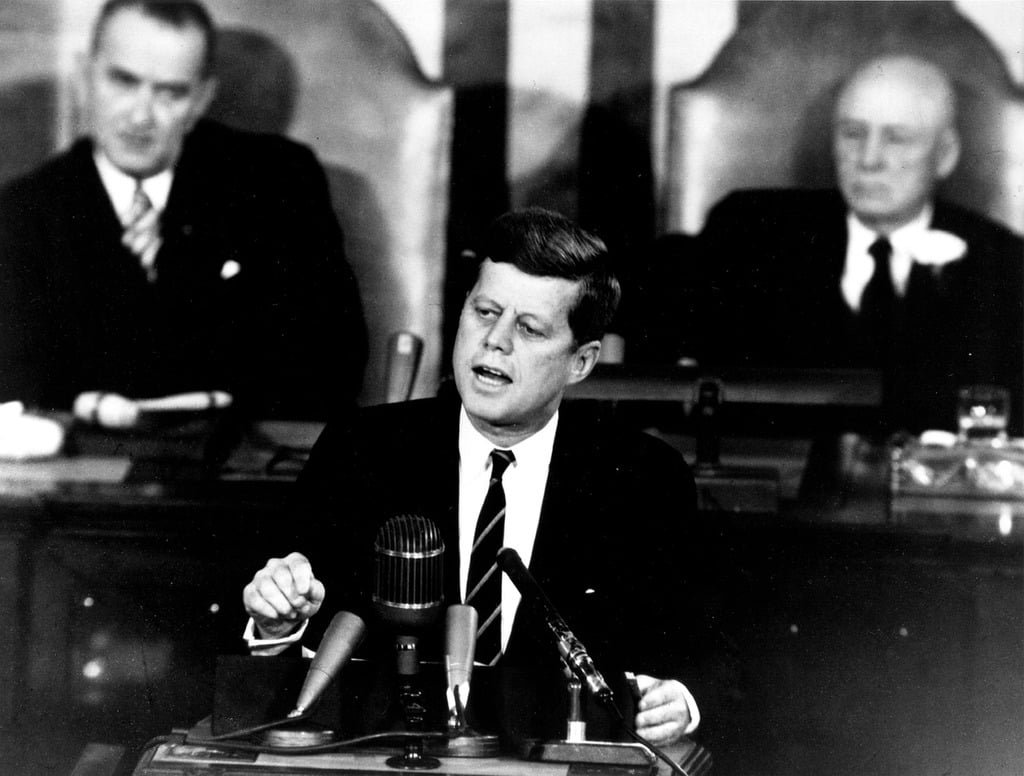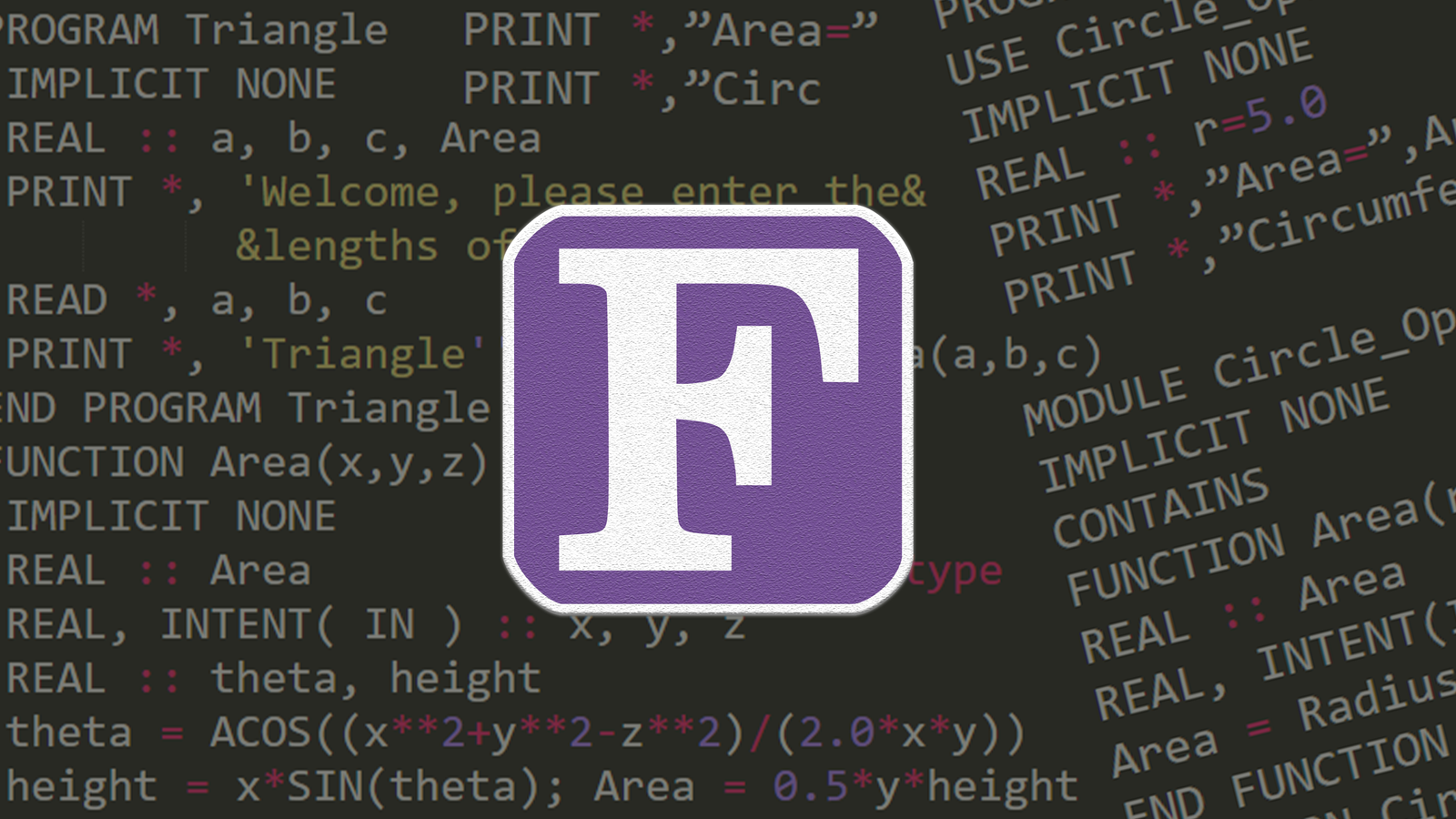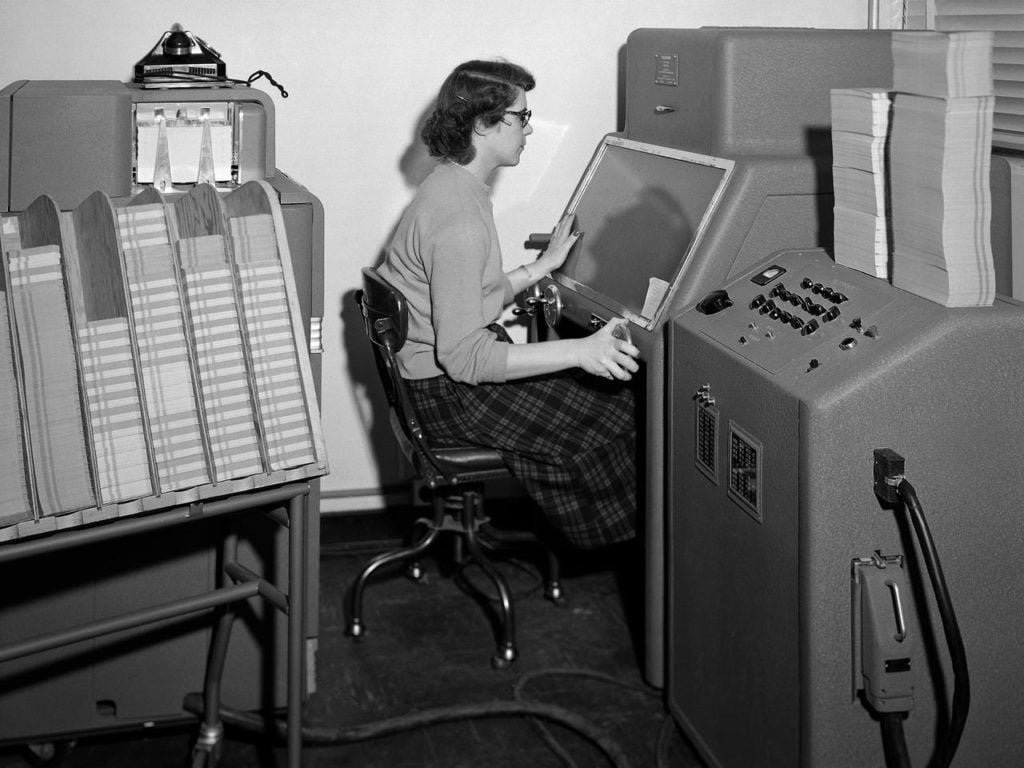In the pantheon of computer history, FORTRAN holds a special place as the first widely used high-level programming language. But what exactly was the first FORTRAN program, and why was it such a big deal? This comprehensive journey will explore the history of FORTRAN – from the rough-and-tumble days of early coding in the 1940s and 50s, to John Backus’s visionary project at IBM, through the groundbreaking development of the FORTRAN language and compiler, and culminating in that very first FORTRAN program run in 1954. We’ll see how this event marked a paradigm shift in programming, examine the key features and innovations of early FORTRAN (like its readable formula translation and efficient FORTRAN compiler), and trace its rapid adoption, evolution, and lasting legacy of FORTRAN in computing. By the end, you’ll understand not only what the first FORTRAN program did, but also why it still matters in today’s world of modern programming languages.
Table of Contents
Programming Before FORTRAN: Code in the Early Days
To appreciate FORTRAN’s impact, let’s rewind to the era before FORTRAN, when programming was a painstaking, low-level affair. In the 1940s and early 1950s, writing a program often meant dealing directly with machine code – the raw binary bits (0s and 1s) that a computer’s hardware could execute. This was the first generation of coding, and it was as arduous as it sounds. Programmers had to flip switches or punch holes in paper tape to represent each individual instruction. Every operation was specified in numeric codes, and even a simple calculation could require dozens of these obscure instructions. It’s no wonder early programmers likened their job to battling the machine; IBM’s John Backus later quipped that coding back then felt like “hand-to-hand combat with the machine,” and often the machine won the fight.
By the early 1950s, a slight improvement emerged in the form of assembly language, the second generation of code. Assembly replaced raw binary with short mnemonic codes (like ADD for addition or SUB for subtraction), making programs somewhat easier for humans to write and read. However, assembly was still very much tied to the hardware – essentially a symbolic version of machine instructions. A program written in assembly for one type of computer had to be completely rewritten for another type. Coding in assembly was highly technical and required specialized knowledge of the computer’s architecture. Programmers spent endless hours on meticulous detail, and debugging (finding and fixing errors) could consume up to half of a project’s time. The cost and time of programming were enormous – in fact, in the early 1950s, hiring programmers often cost as much as the computer itself! Clearly, something had to change if computing was to become more practical and accessible.
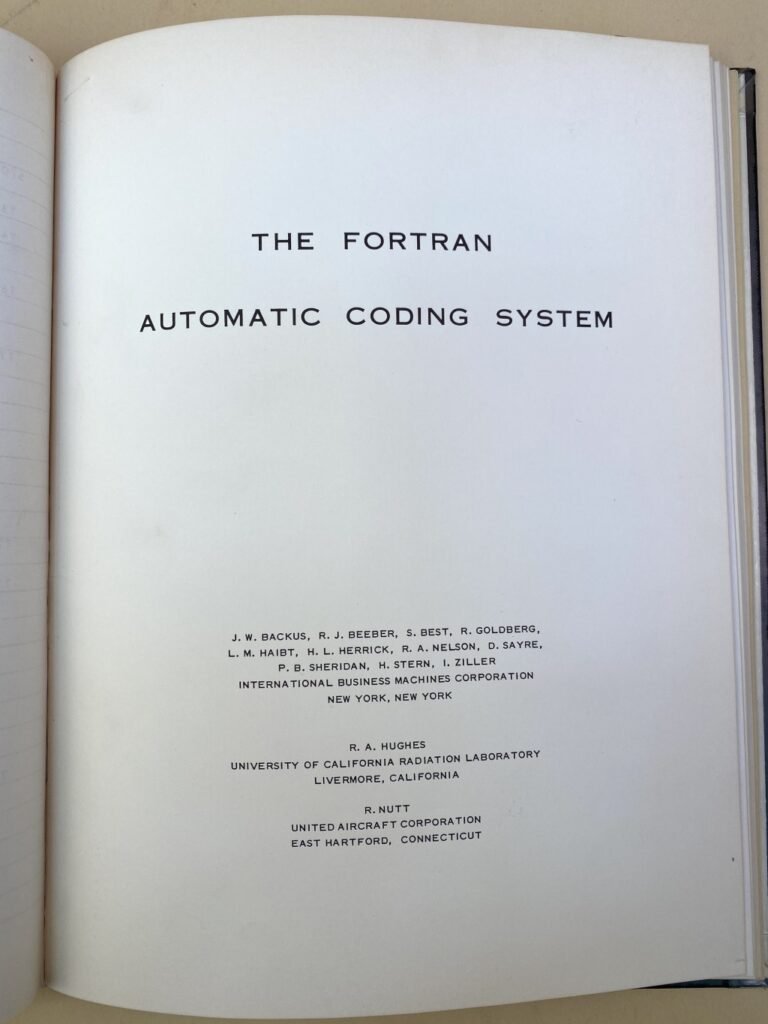
At the time, the idea of a high-level programming language (a third-generation code) was mostly theoretical. A high-level language would allow humans to write instructions in a more natural, English-like or math-like way, and then use a special program to translate those instructions down into machine code automatically. A few pioneering efforts hinted at this future: for instance, mathematician Grace Hopper had developed some early “compiler” tools (like her A-0 system in 1952) to generate code from more English-like instructions, and John Backus himself had created an interpreter called Speedcoding in 1953 for the IBM 701 machine to simplify writing mathematical routines. There were also the Laning and Zierler system at MIT (1952), and a language called Autocode in Britain around the same time – these allowed programmers to write algebraic expressions that a computer could evaluate. However, these systems were either limited in scope or made programs run slow (often ten times slower than hand-written code). In short, early programming languages had yet to prove themselves. Many in the computing community were skeptical that a high-level approach could ever rival the efficiency of painstakingly hand-coded assembly. This was the challenging backdrop against which FORTRAN would soon emerge and forever change programming.
John Backus and the IBM Team Behind FORTRAN
Enter John Backus, a talented yet unconventional IBM programmer, who would become the principal architect of FORTRAN. Backus’s path to computing was anything but linear. In his youth, he had dropped out of medical school and drifted without clear direction. By a twist of fate, he wandered into IBM’s New York offices in 1950 and impressed a staff member with his quick math problem-solving skills. IBM hired Backus on the spot as a programmer – even though he barely knew what programming was! What Backus did have was a genius for problem-solving and a dislike for unnecessary drudgery. He famously admitted, “Much of my work has come from being lazy. I didn’t like writing programs, so I started work on a system to make them easier to write.” In other words, Backus was motivated to automate the boring parts of coding, and this drive would lead directly to the creation of FORTRAN.
By 1953, John Backus was working at IBM’s Watson Scientific Laboratory and had grown frustrated with the complexity and high cost of programming in assembly. He envisioned a new way: a programming language closer to ordinary mathematical notation, which a computer could somehow translate and execute. In late 1953, Backus boldly submitted a proposal to IBM management to develop such a language for the new IBM 704 mainframe. IBM saw potential in the idea – after all, if successful, it could make their machines more attractive by dramatically reducing customers’ programming burden. Backus got the green light and a small budget to pursue this “better way of programming computers.”
Assembling the right team was critical. IBM put out a rather unusual recruitment notice, calling for creative thinkers and puzzle-solvers – one ad even teased that “those who enjoy playing chess or solving puzzles will find this work absorbing.” Backus hand-picked an eclectic group of about a dozen individuals for the job. This FORTRAN team turned out to be as diverse as it was brilliant. It included a self-taught chess wizard, a crystallographer (David Sayre, who had a background in X-ray crystallography), a cryptographer who had worked on code-breaking, a researcher from MIT, and a fresh Vassar College graduate, Lois Haibt, who was the only woman on the team. Notable team members included Harlan Herrick (often credited as the person who ran the first successful FORTRAN program), Sheldon F. Best, Peter Sheridan, Roy Nutt, Robert Nelson, Irving Ziller, Richard Goldberg, and others – all coordinated by John Backus. They were young, bright, and shared a willingness to innovate and learn from each other.
Backus led with a very light touch, fostering a collegial, non-hierarchical atmosphere. The team famously didn’t worry about looking silly or making mistakes; as Haibt later recalled, “No one was worried about seeming stupid or possessive of his or her code. We were all just learning together.” This open culture was crucial, because what they were attempting had never been done before. The project was initially estimated to take only 6 months – an optimism that proved wildly off, as the complexity turned out to be enormous. But IBM management, to their credit, protected the group and gave them the time they needed, even as the schedule slipped. Team members often worked late into the night, grabbing coveted time on the IBM 704 mainframe to test their code (night hours were the only time the machine was free enough for experimental work). They even blew off steam with the occasional hallway snowball fight during New York winters! This mix of hard work, camaraderie, and management support formed the perfect environment for a revolution in programming to brew.
Building the FORTRAN Language and Compiler (1954–1957)
With his team in place, Backus set out to create what would become FORTRAN, short for “FORmula TRANslating System.” The vision was clear: allow programmers (especially scientists and engineers) to write formulas and algebraic expressions much as they would on a chalkboard, and have the computer automatically translate those formulas into efficient machine code. In early 1954, the team began designing both a new programming language and the very first FORTRAN compiler – the translator program that would convert the high-level FORTRAN code into low-level instructions the IBM 704 could execute.
Designing the FORTRAN language meant striking a careful balance. On one hand, it needed to be readable and familiar to mathematicians, using standard mathematical notation and words. On the other hand, it had to be constrained enough that a machine could mechanically translate it. The language syntax they came up with was a breakthrough in itself. FORTRAN allowed variables with names (like X or VELOCITY), formula-style expressions (e.g., X = (A + B)/2 * H to compute a trapezoid’s area), and high-level constructs such as loops and conditional jumps. In fact, the name “Formula Translation” captured its primary purpose: if you could write down a formula to compute something, you should be able to instruct the computer with essentially that same formula in FORTRAN. This was a radical change from assembly, where every tiny step (loading a register, adding, branching on conditions, etc.) had to be specified.
However, simply designing a nice language on paper wasn’t enough – the crux was implementing it. The FORTRAN compiler that Backus’s team needed to build would become one of the most complex and innovative software projects of its time. Consider the challenge: their program (the compiler) had to read a punched card deck of human-written FORTRAN statements, parse those statements (i.e. understand the structure of formulas and commands), and then output a sequence of efficient IBM 704 machine instructions that performed the same calculations. And it had to do all this using the limited memory and processing power of a 1950s mainframe. The IBM 704 had only 4K to 8K words of memory available (by comparison, that’s microscopic — modern computers have millions of times more memory), so the compiler had to be extremely streamlined. The team essentially had to invent many techniques of compiler design from scratch: reading and tokenizing source code, analyzing expressions (figuring out operator precedence and parentheses), allocating registers for variables, and so on.
One of the biggest hurdles was performance. High-level languages of the day (and even some skeptics on Backus’s team) feared that any automatic translation would produce inefficient code. Assembly programmers often optimized their hand-written code to wring out every drop of performance, and they assumed a compiler could never match their skill. Backus’s team was determined to prove them wrong. They made the FORTRAN compiler an optimizing compiler – the first of its kind. This means the compiler didn’t just naively convert code line by line; it actually analyzed the whole program and tried to improve the resulting machine code. For example, the compiler would identify repeated calculations and reuse them, choose the fastest math instructions available, and rearrange the order of operations when possible to make the program run faster. One innovative technique used in the FORTRAN compiler involved a kind of probabilistic optimization (Backus later referred to it as a “Monte Carlo” method) to find the best order to execute statements for speed. They broke the compilation process into multiple passes or phases (reportedly more than 20 distinct phases) that incrementally transformed the high-level code into optimized machine code.
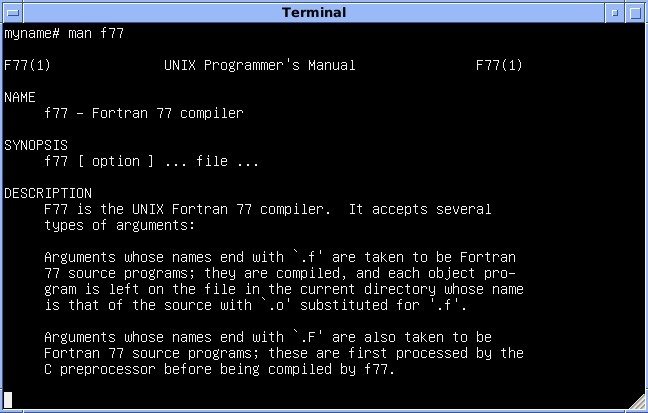
The development process was arduous. What was supposed to take 6 months stretched to about 3 years of intense work. By 1954, the team had a working draft of the language specification (in fact, a draft spec was completed in November 1954). That same year, they began to implement pieces of the compiler and run preliminary tests. It turned out to be a monumental task – the final FORTRAN I compiler (as the first version was later called) consisted of around 25,000 lines of assembly code, an astronomical size for software in those days. But piece by piece, the team made progress, debugging each part both logically and through actual runs on the IBM 704. Their dedication paid off when they finally achieved a breakthrough: the compiler successfully translated a program written in their new high-level language into a running machine program. This triumph set the stage for a historic moment in computing.
The First FORTRAN Program Runs in 1954: A Paradigm Shift
On September 20, 1954, inside IBM’s lab, a significant “first” took place: a computer executed a program written in FORTRAN for the very first time. Harlan Herrick, one of Backus’s team members, ran this inaugural FORTRAN program on an IBM 704 mainframe. This was a quiet event – no fanfare or press releases at the time – but in hindsight, it marks one of the great turning points in software history. For the first time, a high-level program (written in something akin to human mathematical language) had been compiled and run successfully on a machine.
What did this first FORTRAN program actually do? By today’s standards, it was no miracle of application software – likely a straightforward mathematical computation chosen to test the compiler’s output. Some accounts suggest it may have calculated a series of numbers or solved a simple equation to verify that the compiler’s results were correct. In essence, it was probably a small sample problem that the team knew how to solve by hand or with an existing assembly program, so they could compare results. The specifics have been lost to time, but the importance of the program was not what it computed, but how it was created. Instead of being crafted in raw machine instructions or assembly, this program was written using FORTRAN statements – algebraic formulas, loops, and conditional logic expressed in a form a mathematician could read. The compiler then automatically translated these high-level statements into the machine-level instructions required to get the answer. When the machine printed out the correct result, it validated the whole approach.
That moment was a paradigm shift. In a sense, the computer had started to understand something closer to human language. The successful run proved that high-level programming wasn’t just a pipe dream – it could work in reality, and work efficiently. People often describe this event as the birth of automatic programming. No longer did humans have to laboriously hand-code every tiny step; they could focus on the problem in conceptual terms and let the compiler handle the “dirty work” of translating it for the machine. It’s hard to overstate how transformative this felt to those who experienced it. For John Backus and his team, it was an exhilarating vindication of years of effort. They had built a bridge between human thought and computer hardware. Programming would never be the same again.
The first FORTRAN program’s success also went a long way to silence the skeptics. It demonstrated that a program written in a high-level language could be translated into machine code that ran nearly as fast as an equivalent hand-written assembly program. This was the key requirement for FORTRAN’s acceptance: if the new approach had been slow or inefficient, programmers would have dismissed it. But by late 1954 and into 1955, as testing continued, it became clear that the FORTRAN compiler was producing excellent code. The achievement of that first running program opened the door for finishing the full FORTRAN system and releasing it to the world, which IBM would do a couple of years later. In the meantime, the team continued refining the language and the compiler, adding features and ensuring reliability, so that it would be ready for general use.
Key Features of Early FORTRAN
Early FORTRAN (Fortran I as it came to be known after later versions appeared) introduced several key features and concepts that were revolutionary in the mid-1950s. These features made programming more readable, more efficient, and more accessible to people who were not low-level coding experts. Here are some of the notable characteristics of FORTRAN in its first incarnation:
- Human-Readable Syntax: FORTRAN code was designed to look like ordinary algebra and English, rather than cryptic machine opcodes. For example, to compute the average of two numbers, you could simply write
AVERAGE = (A + B) / 2. This was light-years ahead of assembly language, where accomplishing the same thing might require a dozen lines of loads, adds, and shifts. FORTRAN’s keywords (likeIF,DO,FORMAT, etc.) were brief and (mostly) English-based, and its ability to use descriptive variable names meant programs were easier to understand. This readability was by design – it allowed scientists and engineers to write programs in a notation they were comfortable with, formula translation mirroring the equations in their textbooks. - Formula Translation and Algebraic Expressions: The most groundbreaking feature of FORTRAN was exactly what its name implies – the ability to write complex formulas directly. FORTRAN was one of the first languages to support arithmetic expressions with parentheses, operator precedence, and a library of mathematical functions (like sine, cosine, log, etc.). You could write something like
Y = SIN(X) + 3.14 * X**2and the compiler would know how to generate code to compute it. This was a monumental convenience. It allowed programmers to focus on the math or logic of their problem rather than on manual calculation steps. FORTRAN’s support for floating-point arithmetic (thanks to the IBM 704’s hardware) meant it could natively handle real numbers and scientific calculations with decent precision. - Loops and the “DO” Statement: FORTRAN introduced a controlled looping construct via the
DOstatement – a precursor to the modern “for-loop”. Instead of jumping around with unwieldy branch instructions, a programmer could say, for example,DO 100 I = 1, 10to loop I from 1 to 10. ThisDOloop made it far simpler to repeat operations multiple times or iterate over array elements. It’s worth noting that one of the FORTRAN team members, David Sayre, is credited with inventing theDOstatement during the development of the language. Early FORTRAN’s loops and branches (like theIFstatement) gave programmers higher-level tools to structure the flow of their programs in a logical way. - Subroutines and Modularity: FORTRAN I allowed the use of subroutines and functions, which are blocks of code that could be written once and reused multiple times. This was supported through separate compilation of program modules (fully realized in later Fortran II, but the groundwork was in Fortran I). For example, one could write a subroutine to solve a quadratic equation or to sort a list of numbers, and then call that subroutine whenever needed, rather than writing the same code over and over. This idea of modularity and code reuse was a big step toward making larger programs manageable and is a cornerstone of modern programming.
- Input/Output Formatting: While more rudimentary than today’s languages, early FORTRAN did introduce a way to handle input and output (I/O) in a structured manner. The
FORMATstatement allowed programmers to specify how numbers and text should be arranged when printing or reading from punch cards. This was important for producing readable reports or reading complex data sets, a common need in scientific computing. - Machine Independence (to a degree): One of FORTRAN’s philosophical breakthroughs was the notion that a programming language could be portable – not tied to one specific machine’s instruction set. In theory, as long as a computer had a FORTRAN compiler, it could run any FORTRAN program, regardless of where that program was written. In the 1950s, this was a novel concept. Initially, FORTRAN I was of course specific to the IBM 704, but its design set a precedent. Soon after IBM released FORTRAN, other computer makers created their own FORTRAN compilers so that they could run the same programs on different hardware. This was the beginning of the idea that software could be somewhat independent of hardware. Programmers could invest time in writing a FORTRAN program without fear that it would become useless if their lab got a new computer – they could just compile it on the new machine (with minor adjustments). This portability was limited at first but grew stronger with later standardization of the language.
In summary, early FORTRAN turned programming into something much closer to everyday problem solving. It abstracted away the gritty details of memory addresses and CPU instructions, letting programmers work with familiar mathematical concepts. Crucially, it managed to do this without sacrificing efficiency, which is why it succeeded where previous attempts had faltered. FORTRAN programs were not only easier to write and read, but they also ran fast, thanks to the compiler’s innovations. This combination of high-level expressiveness and performance made FORTRAN a game-changer.
Innovations in the First FORTRAN Compiler

The success of FORTRAN hinged on the remarkable innovations under the hood of its compiler. The first FORTRAN compiler (delivered in 1957 after years of development) wasn’t just a translator – it was an early masterpiece of software engineering. Here are some of the notable challenges it overcame and innovations it introduced:
- Optimizing Compiler Techniques: Prior to FORTRAN, the term “optimizing compiler” was practically unheard of. The FORTRAN compiler had to prove that generated code could approach the efficiency of hand-written code. To do this, the team implemented techniques to optimize the machine code during compilation. For example, the compiler would optimize algebraic expressions by reusing intermediate results and eliminating redundant calculations. If a certain sub-expression (like
X+Y) was used multiple times, the compiler might calculate it once and store the result, rather than recompute it each time. The FORTRAN compiler also made smart decisions about which machine instructions to use – picking faster hardware operations when possible, and unrolling loops or combining steps when it could. These optimization techniques were groundbreaking and later became a foundation for modern compiler design. - Handling of Loops and Flow Control: Implementing the
DOloop and theIFstatements in an automated way was a major challenge. The compiler needed to translate a high-level loop into the correct sequence of machine instructions to increment indices and jump back and forth. It had to insert the right branch instructions to make loops work, and handle the end conditions properly. This seems straightforward now, but at the time it required careful logic to be encoded in the compiler. Similarly, FORTRAN’s conditionalIF(which in FORTRAN I was an arithmetic IF, branching to different labels based on whether an expression was negative, zero, or positive) needed the compiler to evaluate a condition and decide which instruction address to jump to. The FORTRAN compiler essentially created templates for these structures and filled in the details based on the source code – an approach that paved the way for implementing all sorts of high-level constructs in compilers that followed. - Memory Management and Compilation Phases: With the limited memory of the IBM 704, the compiler couldn’t load and process the entire source program in one go (especially for larger programs). The team ingeniously split the compilation process into dozens of phases or passes. Each phase would handle a part of the translation – for instance, one phase might parse the code, another might allocate variables to memory locations, another might optimize arithmetic expressions, and so on. They implemented an overlay system where phases were loaded one after the other, each phase taking the output of the previous one as input. By streaming the compilation in this way, they fit a very complex process into a small memory footprint. This multi-pass compilation approach is still used in compilers today (albeit with far more memory available now!).
- Error Checking and Debugging Aids: Early FORTRAN did not have the sophisticated compile-time error diagnostics we expect now, but the compiler did incorporate some checks to make sure the source code followed the proper syntax and rules. Generating helpful error messages was recognized as important even then – if a scientist made a typo in a formula or misused a statement, the compiler needed to catch it. The FORTRAN I compiler would point out certain errors, which was itself an innovation – in pure assembly, the machine wouldn’t tell you if you wrote something wrong; you’d only know when it misbehaved. FORTRAN introduced the idea of the compiler as a helpful intermediary that could catch mistakes before running the program.
- The First Large-Scale Software Project: It’s worth noting that building the FORTRAN compiler was an innovation in terms of project management and methodology, not just technology. With roughly 25,000 lines of code (all in assembly language for the IBM 704) and multiple team members working on different sections (often referred to by section numbers in documentation), it was likely the largest software development effort up to that point. The team had to ensure all these sections worked together seamlessly. In doing so, they pioneered practices in testing and integration. They wrote test programs to verify each part of the compiler – effectively, software testing began here in a serious way. The complexity they tamed set a precedent that complex software could indeed be built and made reliable through systematic effort.
- Self-Hosting and Bootstrapping: A fascinating aspect of early compiler development is how to run the compiler itself. At first, the FORTRAN compiler was hand-coded in assembly (since obviously no compiler existed to compile a compiler!). Over time, aspects of FORTRAN could be used to improve itself or to write tools for it – a concept known as bootstrapping. While the very first compiler was not written in FORTRAN, the project laid the groundwork for future compilers that could be written in their own language. This idea of a language defining its own implementation was an innovation that would emerge more in later years, but FORTRAN opened the door.
In sum, the first FORTRAN compiler was a tour de force of innovation. It not only proved that automatic programming was feasible, but it also introduced many concepts that would become standard practice. The compiler’s ability to produce efficient code was arguably its most important innovation – it changed the mindset of an industry, showing that humans could delegate low-level optimizations to a machine. After FORTRAN’s compiler, the development of compilers for other languages (COBOL, ALGOL, etc.) accelerated, often borrowing the same techniques and lessons learned from Backus’s team. The ripple effect of these innovations is still felt in every modern compiler that effortlessly translates languages like C++, Java, or Python down to machine code today.
From Skepticism to Success: Reception and Adoption of FORTRAN
When FORTRAN was finally released to the public in April 1957 (with the delivery of the first FORTRAN compiler to IBM’s customers), it faced both excitement and skepticism from the computing community. Here was a tool promising to cut development time drastically and open programming to a broader audience – claims that sounded almost too good to be true for hardened assembly programmers. However, it didn’t take long for FORTRAN to win everyone over, kicking off a rapid wave of adoption that fundamentally changed computing in the late 1950s and 1960s.
Initial skepticism: Seasoned programmers had long held the belief that high-level languages could never generate code as efficient as hand-crafted assembly. Early on, many viewed FORTRAN as an academic experiment – interesting, but not something you’d trust for real, heavy-duty work. There was also the attitude that “real programmers” knew how to manage the machine and that using a crutch like a compiler might be beneath them or potentially error-prone. Some feared that a compiler’s complexity could mean it might introduce bugs or unpredictable performance issues in the generated code. These doubts were natural; after all, no one had seen a successful high-level language at scale before.
IBM’s gamble and demonstration: IBM did its part to encourage FORTRAN’s adoption. By releasing the compiler for the IBM 704, IBM essentially gave away a powerful software tool as added value for their hardware clients (back then, software was often bundled free with hardware sales). They needed to convince customers that using FORTRAN would not only simplify their work but also not degrade the performance of their programs. The fact that the FORTRAN compiler was an optimizing compiler turned out to be decisive. Once people tried FORTRAN on some real tasks, they discovered that the resulting machine code ran impressively fast – in many cases, nearly as fast as meticulously hand-tuned assembly. One oft-cited metric was that FORTRAN reduced the number of programming statements required by a factor of 20. For example, a computational routine that might have taken 1000 assembly instructions could be expressed in perhaps 50 lines of FORTRAN. And if those 50 lines ran at 90% of the speed of the 1000 assembly lines, why wouldn’t you make the switch? The productivity boost was just too large to ignore.
Rapid adoption by scientists and engineers: The group that embraced FORTRAN most enthusiastically was scientists and engineers – the very people it was designed for. At long last, they had a tool that let them write programs for their complex calculations without needing to become full-time programmers steeped in machine intricacies. A physicist could write code to analyze experimental data by formulating it in FORTRAN, much as they would write the formula on paper. An aeronautical engineer could program a missile trajectory calculation by writing the mathematical equations directly in the code. This was a huge democratization of computing. Programming was no longer the exclusive domain of a priesthood of assembly wizards; it was now accessible to anyone with the analytical skills to formulate a problem. Fortran (as it was often styled by then, losing the all-caps in common usage) became the dominant language for scientific and technical computing within just a few years of its introduction.
Diverse applications and industry use cases: The success stories started piling up. FORTRAN was used to calculate rocket trajectories and orbital paths during the early space race – NASA and its contractors found it indispensable for crunching numbers in the Mercury and Apollo programs. Meteorologists adopted FORTRAN to develop some of the first computerized weather prediction models, which involved heavy number-crunching on large data sets. In the energy sector, nuclear engineers used FORTRAN to simulate nuclear reactor designs and performance. Financial analysts even began using FORTRAN for complex economic modeling. Prestigious research labs and universities embraced the language for everything from structural engineering computations to simulating physical phenomena. One charming anecdote even has FORTRAN helping farmers: thanks to its number-crunching power, some agricultural researchers wrote FORTRAN programs to analyze animal genetics – for example, to optimize the breeding of chickens for desirable traits. That’s right, even chicken farming got a high-tech upgrade from FORTRAN!
By 1960, the writing was on the wall – FORTRAN was a smashing success. IBM’s competitors, who had their own computer hardware, saw that to sell machines they also needed to offer FORTRAN or something like it. Thus, FORTRAN compilers (or compatible offshoots) were developed for many other systems beyond the IBM 704. It was reported that by 1963 there were over 40 FORTRAN compilers available on various makes and models of computers. This proliferation meant that FORTRAN programs truly had become portable across different platforms, accelerating its use as a standard tool in computing centers worldwide. FORTRAN was even standardized by the American Standards Association in 1966 (the standard known as FORTRAN 66) – making it the first programming language to have an official industry-wide standard. This assured that code written in FORTRAN could be shared, published, and run in many places with minimal changes, further fueling its adoption.
The broader computing community also came around to FORTRAN’s benefits. Programmers realized that using a high-level language freed them to focus on algorithms and problem-solving rather than the minutiae of hardware. And managers noticed that projects written in FORTRAN tended to be completed faster and with fewer errors than those in assembly, which translated to cost savings. By the mid-1960s, FORTRAN had effectively won the battle against assembly coding (at least in the scientific domain). Most new scientific software was written in FORTRAN, and many older programs were being ported over to FORTRAN for ease of maintenance and better longevity.
In summary, FORTRAN’s reception evolved from cautious skepticism to enthusiastic acceptance in a remarkably short time. It went from a risky IBM project to the industry standard for programming, proving that high-level languages were not only possible but in fact the superior way forward. This acceptance cleared the path for a wave of new programming languages that followed, each targeting different needs but all owing a debt to the trail that FORTRAN blazed.
Evolution and Legacy of FORTRAN
The story of FORTRAN didn’t end with that first compiler or its initial adoption; in many ways, that was just the beginning. Over the subsequent decades, FORTRAN itself evolved significantly, and its influence on computer science and software development is profound. The legacy of FORTRAN can be seen in both its direct descendants and the broader concepts it introduced to the world of programming.
Evolution of the language: Shortly after the success of FORTRAN I on the IBM 704, IBM released Fortran II in 1958. This version added the ability to split programs into separate subroutines and modules that could be compiled independently and then linked – a crucial feature for building larger software systems. As computers advanced, so did the language: Fortran IV (around 1962) cleaned up some of the quirks and became widely used in the 1960s, eventually leading to the aforementioned standard FORTRAN 66. In 1978, Fortran 77 introduced more modern control structures (like the Block IF and END IF for clearer conditional logic) and other improvements. A major overhaul came with Fortran 90, which transformed the language by adding features like free-form source code (no more restrictive column rules from the punch-card days), recursion, dynamic memory allocation, and even object-oriented-ish constructs. This trend continued with Fortran 95, 2003, 2008, and the latest standards (yes, FORTRAN – now styled “Fortran” – is still being updated in the 21st century!). Modern Fortran has many of the conveniences of contemporary languages while still excelling at numerical computation.
Continuous use in scientific computing: One of the strongest parts of FORTRAN’s legacy is that it became, and remains, a backbone of scientific and high-performance computing. Fortran (especially through the 1970s-1990s) was the language of choice for heavy number-crunching tasks. Vast libraries of mathematical routines (like LINPACK and LAPACK for linear algebra) were written in Fortran and are still used under the hood in many applications. If you’ve ever used a program that involves serious simulation or mathematical optimization, there’s a good chance some of its core is written in Fortran. Even today, many supercomputers run climate models, astrophysical simulations, and computational fluid dynamics codes written in Fortran – often because these legacy codes are highly optimized and have been refined over decades. The saying “Fortran is the language in which the speed of light was first computed” might be apocryphal, but it speaks to the truth that Fortran has been instrumental in science and engineering breakthroughs.
Influence on other programming languages: FORTRAN’s success in the late 1950s directly inspired the creation of other high-level languages. After seeing FORTRAN work, industry and academia embraced the idea of high-level programming in general. In 1958, the language ALGOL was developed by an international committee (including Backus, notably) – ALGOL introduced even more structured syntax and block structures, and influenced countless languages after it, from Pascal to C. FORTRAN’s demonstration that business applications could use a high-level approach led to COBOL in 1959, which did for business data processing what FORTRAN did for science. Many early languages for specialized purposes sprang up, riding the wave that FORTRAN started.
It’s interesting to note that while languages evolved in different directions, the compiler technology pioneered by FORTRAN was universally adopted. The idea that a compiler could optimize code became standard. So, whether you were writing in COBOL, PL/I, C, or any later language, you expected the compiler to take care of low-level details and produce good machine code. This was a mindset shift initiated by FORTRAN’s triumph.
Software industry and standards: FORTRAN also inadvertently helped kick-start the software industry. In the 1950s, software wasn’t really a product; companies like IBM made their money selling hardware, and software was often an afterthought or given away. But as FORTRAN programs began to showcase the value of software, the notion of investing in software development gained ground. IBM’s work on FORTRAN can be seen as one of the first big investments in a software product (even if it was bundled with machines). Over time, as computing moved into the 1960s and 70s, companies realized that good software (be it languages, operating systems, or applications) could be as important as the hardware. FORTRAN’s widespread use led to efforts in standardization (to ensure consistency across platforms), which in turn led to professional societies and committees focusing on programming languages. We can trace today’s robust ecosystem of programming languages and development tools back to the success of FORTRAN proving it was all worthwhile.
A lasting legacy: Perhaps the greatest testament to FORTRAN’s legacy is that it is still in use today, over 65 years since that first program ran. Very few technologies in computing have that kind of staying power. There are decades-old Fortran programs still running critical systems, simply because they work and continue to be efficient. Fortran has a reputation for producing highly optimized code for numerical tasks – modern compilers can vectorize and parallelize Fortran loops extremely well, making it competitive with or even superior to newer languages for certain workloads. In the world of scientific research, one often encounters a mix of languages: Python or MATLAB for ease of use, and underlying Fortran or C for the heavy lifting. Even some parts of popular libraries (like NumPy for Python) rely on Fortran under the hood for performance-critical operations.
Culturally, understanding FORTRAN’s story gives us perspective on how far software development has come. We’ve gone from feeding punched cards into room-sized machines to typing high-level code into laptops – yet the core idea is the same as what Backus and his team proved in 1954: let the computer do the menial work of translation, so humans can think in human terms. Every time a programmer today writes in a high-level language (be it JavaScript, Python, Java, or anything) and hits “compile” or “run,” they are benefitting from the concept that FORTRAN introduced to the world.
Conclusion: Why the First FORTRAN Program Still Matters Today
The tale of the first FORTRAN program is much more than a piece of trivia in computer science – it’s a foundational chapter in the story of how humans learned to communicate with machines on our own terms. The successful execution of that program in 1954 symbolized the birth of high-level programming, an event whose ripple effects have shaped every aspect of modern computing.
Why does it matter today? First, it reminds us that the conveniences we take for granted were hard-won innovations. The fact that you can write a few lines of code in a high-level language and have a computer instantly do millions of operations correctly – that concept had to be imagined and built for the first time by the FORTRAN team. Their work paved the way for every programming language that followed. The DNA of FORTRAN’s design can be seen in subsequent languages: the separation of logical design from machine implementation, the use of compilers to manage complexity, and the very idea that code should be written in a human-friendly way. If you’ve ever coded in C, Python, Java, or any language, you’re inheriting the legacy of FORTRAN. Understanding how it all started gives a greater appreciation for the abstraction power we wield so casually now.
The story of FORTRAN is also a case study in innovation and vision. John Backus and his colleagues dared to challenge the status quo of their time. They were told it “couldn’t be done,” yet they persisted for years to make programming more accessible and efficient. Their success teaches us the value of creative problem-solving and perseverance in technology – qualities that remain just as relevant in today’s rapidly evolving tech landscape. New computing paradigms (like artificial intelligence or quantum computing) will similarly require leaps of faith and radical thinking, much as FORTRAN did in its day.
Moreover, the first FORTRAN program’s paradigm shift – moving from low-level to high-level thinking – is an ongoing theme in computing. Over the decades, we’ve continually raised the level of abstraction: from writing assembly to writing in high-level languages; from managing our own memory to letting systems do it; from running our own servers to using cloud services. Each step, like the one FORTRAN initiated, allows more people to get involved and for technology to advance faster. By studying how FORTRAN opened the door, we glean insight into how important it is to build tools that empower more people (in FORTRAN’s case, enabling scientists and engineers to directly program computers). It’s a pattern we see repeated with modern user-friendly programming environments and domain-specific languages.
Finally, the continued use of FORTRAN in niche but critical areas (like scientific computing and legacy systems) is a testament to the soundness of its design and the importance of backward compatibility in tech. It shows that great tools can endure. When you realize that some of the code running today’s weather models or financial simulations traces back through generations of FORTRAN code, you develop respect for how enduring the impact of that first program has been.
In conclusion, the first FORTRAN program represents the moment computers began to speak the language of humans more than humans had to speak the language of computers. It was the inauguration of a new era where coding became about expressing ideas, not wrangling bits. That shift unlocked countless possibilities, leading directly to the rich world of software we have now. Remembering the birth of FORTRAN isn’t just an exercise in nostalgia – it’s a reminder of how one breakthrough can change the trajectory of technology forever. As we write code in the comfort of modern languages, we owe a nod of thanks to that modest FORTRAN program from 1954, which boldly declared that programming could be better, and in doing so, ushered in the future.
